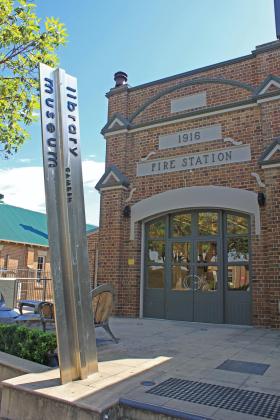Planning: New building, refurbishment or mobile?
Before starting the project, determine whether a library building or a mobile library is best for your community. Consider options for refurbishment and sites for a new building.
New building or refurbishment

The choice of site may be influenced by the possibility of reusing or adapting an existing building. The prospect of utilising a refurbished building rather than a new facility may at first appear to be a more cost-effective option. However, the suitability of the building as a library can have a substantial impact on refurbishment and operational costs, and on the future functionality and services to be provided. If appropriate, reusing buildings has a substantial benefit in terms of environmentally sustainable design (ESD) as the embodied energy in constructing a new building is very significant.
Issues to consider:
- heritage value of the building – is it listed? Has it been assessed? A Statement of Heritage Significance or Conservation Management plan will be required for buildings of heritage significance which will guide how the building can be altered
- prominence, transparency and equitable access
- provision for mechanical and electrical services in existing buildings particularly those with heritage significance
- contamination and asbestos
- flexibility, adaptability and expansion capability for future modifications
- fire upgrades and compliance with the National Construction Code.
- environmental performance, maintenance and running costs
- cabling to accommodate local technology plan requirements
- floor loading able to hold significant collection loads.
Mobile libraries
In NSW, mobile libraries play an important role in the delivery of library services to isolated and/or remote communities. In areas of low population density or to cater for specific users (such as rural schools, retirement villages, etc.) a mobile library service may be a good option. The needs of the community should be carefully considered, including population projections and variations, when choosing between starting or continuing a mobile service or opening a new library branch. Availability of other local community facilities, such as meeting rooms and social spaces should be part of the decision making process.

Advantages of a mobile library:
- provides a close-at-hand, convenient service, especially for the less mobile such as young children and older residents;
- can effectively fill a gap between libraries and an isolated pocket of population for which a permanent building would be uneconomic
- can provide an effective interim service in developing areas where the population does not yet justify a permanent site, or where a permanent site cannot yet be identified because development plans are not far enough advanced.
Disadvantages of a mobile library:
- is not a cheap alternative to permanent buildings. The rate of depreciation is high, as are establishment and operating costs
- can at best offer a one day a week service at any one location
- has stocks which are typically small since the largest vehicle will only carry about 7,000 books
- is unlikely to provide full library services including broad collections, events and programs
- cannot provide ongoing access to library spaces such as meeting rooms, quiet reading and study areas and fully equipped technology spaces.